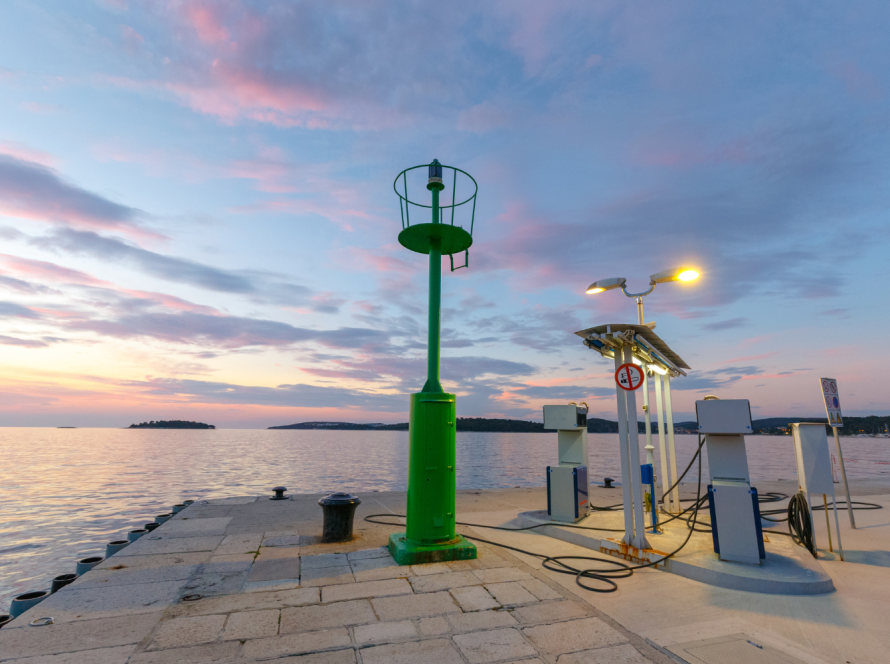Navigating the open waters can be an exhilarating experience and give you a sense of freedom. However, there are rules and responsibilities all captains must follow. Whether steering a small sailboat or cutting through the water in a powerboat, you must understand and adhere to the boating right-of-way rules when other boaters are in the water. These rules refer to the maneuvering regulations designed to avoid a collision between vessels on the water. This guide from ECHOTec will sail into the intricate boating and sailing right-of-way rules, focusing on comparing sailboats and powerboats.
Importance of Understanding Boating Right-of-Way Rules
Imagine yourself gliding across the beautiful ocean, listening to the waves crash onto the side of your hull. With all of the serenity, it is easy to forget that other boats are also navigating their courses. This is where the importance of understanding boating right-of-way rules comes into play.
When you are out on the water, waterways can sometimes become very crowded, just as traffic in a car can be. No yellow or white lines show you what lane to stay in. Therefore, boaters should comprehensively understand the rules when operating a boat. Comprehending these rules can prevent potential accidents out on the water.
When Crossing Paths, What Is the Give-Way Vessel’s Responsibility?
When encountering other vessels that are out on the water, there are two rules every captain/boat operator must follow. The two rules are:
- A give-way vessel is a vessel that must take early and considerable action to get out of the way of other vessels, either by stopping, slowing down, or changing direction to avoid crossing in front of the other boat. The change in course and/or speed must be substantial enough that the other vessels are clearly aware of it.
- A stand-on vessel must maintain its course and speed unless the give-way vessel doesn’t take appropriate action. Therefore, you must change your course to avoid the other boat, ensuring you don’t cross in front of it.
Who Has the Right-of-Way? A Sailboat or Motorboat?
Identifying the key distinctions between sailboats and powerboats is crucial in understanding who has the right-of-way. Sailboats’ primary power source is wind, which allows them to propel forward. This very skillful maneuver requires them to map out their course accurately. On the other hand, motorboats have engines that enable them to quickly accelerate and have precise control over their maneuvers.
These distinctive differences in propulsion and precision handling develop the reasoning for who has the boating right-of-way when navigating through the water. In a situation where a sailboat (without auxiliary power engaged) meets with a small powerboat, the sailboat has the right-of-way due to the difficulty in drastically changing direction quickly. The powerboat must give way to the sailboat and allow them to continue on their desired course.
Sailing Right-of-Way
Now that you know what to do if a powerboat meets a sailboat out on the water, what happens when a sailboat meets another vessel under sail?
The following rules apply based on the circumstances:
- The sailboat on the starboard tack (wind coming over the starboard side) has the right–of–way.
- If both vessels are on the same tack, the leeward boat (downwind) has the right–of–way over the windward sailboat.
- If both sailboats are on the same tack but in a position to pass one another, the vessel being overtaken has the right–of–way no matter the situation.
Navigating Responsibly With ECHOTec Watermakers
Understanding boating right-of-way rules is key for safe and responsible voyages, whether you’re in a powerboat or sailboat. While you embark on your voyage, ensure that your vessel is equipped with sustainable systems such as a sailboat watermaker or powerboat watermaker offered by ECHOTec Watermakers. Advances in sailboat desalination systems have provided reliable freshwater solutions for those at sea. Embrace responsible and safe boating practices, from right-of-way rules to sustainable water options, to create enjoyable journeys. Contact us today to upgrade your boating experience and set sail with confidence on your next voyage.



